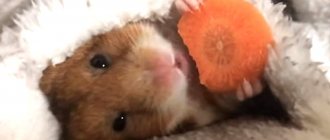Types of tumors
The bumps can be located both internally (on organs) and externally (on and under the skin). Based on the nature of their development, three groups of neoplasms are distinguished.
Benign
Their appearance provokes unlimited cell division caused by injury, virus, or failure at the level of the genetic code. These neoplasms are characterized by stability. They look like a small subcutaneous ball. When you press on it, it moves to the side. Their density varies: hard, soft, similar to cartilage. They must be removed so that they do not turn malignant.
Important! Typically located on the abdomen, armpits and groin. Quite rarely found on the head.
Malignant
They appear immediately as malignant or transform over time from benign. Cell division in them occurs intensively and in all directions, so metastases occur in different places. The cause of their appearance may be viruses, a disrupted diet, or a failure at the genetic level. Most often they are found in hard-to-reach places of the body and threaten the life of the pet.
Inflamed tissue
The inflamed area looks like a slight swelling. It does not arise due to cell division and tissue proliferation. Most often it appears due to the accumulation of pus (abscess) or lymph.
Did you know? Since 2008, Vietnam has banned keeping hamsters at home, as they are believed to be carriers of dangerous diseases.
Benign and malignant formations
Many diseases are common not only to humans, but also to animals. Neoplasms are a common disease in animals in general and in hamsters in particular. The main symptom of the occurrence is the appearance in any part of the body of various swellings that differ in density. Tumors in hamsters are divided into:
- Benign.
- Malignant.
Benign ones are characterized by the fact that when pressed they will move under the skin, which means a loose fit to the tissues and, accordingly, the possibility of removal. As a rule, the most common superficial neoplasms include lipomas - tumors from adipose tissue that do not have a tendency to malignant degeneration.
Lipomas do not cause any inconvenience to pets, except for cases of compression of nerve endings. If the lipoma does not bother the animal, it is usually not removed.
Symptoms of malignant tumors in most cases appear too late, having managed to affect the tissues and spread to adjacent organs. In this case, rodents are most often euthanized. Often, tumors in hamsters occur in old age; females are much more susceptible to this disease than males.
What to do if bumps appear on your hamster's body
If you find the slightest lump on the body of a rodent, you should immediately go to the veterinarian. Hamsters have weak immunity, and given their small size, the virus spreads extremely quickly. Even if the neoplasm is benign, it can instantly change its character, and it will be too late to do anything.
Based on the tests, the veterinarian will be able to make an accurate diagnosis and prescribe treatment. You can treat a hamster yourself only if there is no way to get to a doctor or he refuses to help. You can try to correct the situation with the help of antibiotics and viral drugs, but you still need to ask your veterinarian for their prescription.
Also find out what to do if your hamster dies.
On the stomach
The appearance of lumps on the abdomen is most often associated with an inflammatory process in the mammary glands. They are both benign and malignant. Usually occur in sexually mature females. They must be removed because they are not intracavitary formations. They are found on the stomach of hamsters and papillomas. Tissue proliferation is caused by a virus.
First, small tubercles appear, in place of which, over time, benign formations resembling warts form. Without timely removal, they can reach 2 cm in diameter, and given the small size of the animal, this is a rather impressive lump. Papillomas can also be treated using a conservative method. A special ointment is applied under a bandage to the damaged areas. If bandaging is not possible, then you need to put a collar on the rodent so that it does not lick the medicine.
Lump on the neck
A lump on the neck is usually the result of an inflammatory process in the lymph nodes. A swollen neck causes discomfort for a rodent. It is difficult for him to eat and move this part of his body. You can verify that there is a problem if you touch the animal’s neck on both sides behind the cheekbones. Inflamed lymph nodes can be felt in the form of small hard balls. If you have a problem, you should immediately go to the doctor so that he can prescribe treatment.
You will be interested to know why a hamster sneezes and what needs to be done about it.
On the cheek
Often an enlarged cheek is a consequence of an active inflammatory process in the oral cavity. It can be caused by hard foods that scratch the cheek pouches. In the wounds that appear, harmful microorganisms begin to intensively develop, causing a strong inflammatory process. A festering wound must be cleaned and washed.
It is best to do this in a veterinary clinic so that a specialist can wash the wound and, if necessary, open the purulent lump. At the same time, he will check the animal’s bite, since often due to its violation, in addition to worsening appetite and nasal discharge, inflammation of the eyes, an abscess or bump appears on the cheek.
Important! It is very important to monitor the condition of the rodent’s teeth, since if there are problems with them, the animal stops eating and may die.
On the butt
The appearance of bumps on the butt is most often associated with the process of puberty in the male. The ovaries greatly increase in size, so it may seem that a tumor has appeared on the butt. Read more about this phenomenon below.
On the side
The appearance of tumors on the side of a rodent's body can be caused by various reasons - from injury to malnutrition. Only a veterinarian can determine the exact cause, so you can’t hesitate, you need to go to the hospital right away.
Swollen paw
The most common cause of a swollen limb is a closed fracture.
But it is impossible to make a diagnosis on your own, so you need to observe the hamster’s behavior:
- Place the animal in a small carrier with solid walls.
- Line it with paper towels.
- Feed varied and in portions to understand what the patient’s appetite is.
- Inspect the damaged area regularly.
As a result of a limb injury, a wound or purulent lump may appear, which will eventually open and turn into an open wound. They need to be treated daily with an antiseptic. If the fracture is closed, the limb will only swell. Then you should definitely visit a veterinarian, since without an x-ray it is impossible to confirm the fracture. The worst variant of the problem is osteosarcoma (malignant neoplasm). Because of it, the limb becomes completely swollen, and the swelling spreads to the body. It cannot be cured.
Did you know? The sex of hamsters is determined by measuring the distance between the genitals. The animal is taken by the scruff of the neck, it stretches out and spreads its hind legs, opening access to the necessary organs. In females the distance between the anal and vaginal openings is about 3 cm, in males
—
twice smaller.
Why does a hamster have big testicles?
The testicles of a domestic hamster during puberty can cause anxiety in the owner and a desire to show the animal to a specialist. The fact is that during this period the testes greatly enlarge and swell, the hair on them practically disappears, and it may seem that a tumor has grown under the tail. But enlarged testicles are a normal phenomenon during male puberty. In this form they are noticeable at three months of age. Sometimes it happens that one testis descends into the scrotum, and the second still remains in the abdominal cavity. Then the swelling under the tail will be one-sided. The enlargement of the testes is due to the fact that seminal fluid begins to collect in them as evidence that the male is ready to reproduce.
But it also happens that testicular swelling occurs for other reasons:
- hormonal imbalance - observed when females and males are kept in the same room in different cages;
- inflammation - if the skin on the testicles is red and hot to the touch, then this indicates an infection, the so-called orchitis. The disease can be treated with antibiotics, but there is no 100% guarantee of a favorable outcome;
- oncology - regardless of whether it is benign or malignant, the only solution is castration.
Neoplasm on the neck
Thickening in the neck of hamsters can be caused by viral or bacterial infections, which lead to inflammation of the animal's lymph nodes. In such cases, Djungarian hamsters may squeak, because the area of inflammation hurts, but not always.
The main symptoms of the disease are loss of appetite due to pain and the inability to turn the head. When you feel the neck under the cheekbones, you will find hard balls - inflamed lymph nodes. A lump on the neck does not affect the life of the rodent, but it causes pain and inconvenience.
How to treat an abscess
An abscess is often mistaken for a tumor - a common purulent neoplasm that arises as a result of infection.
It appears as follows:
- swelling of the affected area;
- deterioration of general condition;
- loss of appetite;
- ugly coat;
- excessive salivation;
- protrusion and purulence of the eyes.
An abscess occurs at the sites of bites, scratches, and wounds. They quickly become infected and the inflammatory process begins. If you notice one of the listed symptoms and find that there is wet fur and pus at the site of the injury, then you should immediately go to the veterinary clinic. The doctor will assess the condition of the problem. If it is at an early stage, then you can get by with regular rinsing and antibiotics. If the wound is already opening, then you will have to open it, disinfect it and apply an antiseptic (Fitoelita, Levomekol). As a last resort - surgical intervention.
Find out what to do if your hamster breaks its leg.
Other neoplasms
Hamsters are very active animals. Sometimes, if they jump unsuccessfully, they can damage their limbs. Careless handling of your pet can also lead to fractures, dislocations or bruises. If a tumor is detected on the paw, it is necessary to visit a veterinarian and examine the rodent to make sure whether the tumor is caused by an injury or a virus that causes the growth of bone tissue (osteosarcoma).
During the inflammatory process, a purulent cavity may form in the animal. An abscess in a hamster usually appears after fights or other injuries. It is accompanied by redness of the skin and painful sensations, and hair may fall out. At first the tumor is hard, but after the appearance of pus it becomes soft. As a treatment, the abscess must be opened and treated to avoid infection.
When is surgery needed?
The problem is solved surgically as a last resort when alternative methods are not effective. Surgery is usually needed if a malignant tumor occurs. It is advisable to have time to perform all the manipulations while it is small, so that it is possible to properly close the wound. After the operation, a course of antibiotics, immunomodulators, and vitamins is prescribed. The duration of treatment is at least a week. If the tumor has formed on the internal organs, then there is no point in operating; the animal will not tolerate surgery. The solution is euthanasia.
Treatment
Rodents do not tolerate anesthesia well, but if they develop a tumor, they need to be shown to a veterinarian. In any case, surgery increases the chances of a sick pet surviving.
When examining a sick hamster, a veterinarian can make the following decisions:
- If the tumor is small and does not cause concern, do nothing. Advise the animal's owner to adjust the diet in favor of low-calorie food - carrots or cauliflower.
- When an abscess is diagnosed, it is opened, the wound is treated with an antiseptic and treatment is prescribed, mainly with anti-inflammatory ointments, for example, Levomekol.
- If the doctor suspects that a benign tumor has formed, it is removed. Overgrown teeth are filed down.
- In a difficult situation, with a large-scale lesion, the doctor suggests euthanizing the animal.
Restorative methods in dentistry
The method of restoration depends simultaneously on several factors: the degree of damage, the results of diagnostic studies, general health, medical history and financial capabilities of the patient. The therapeutic regimen is developed on an individual basis. What to do if a front tooth is chipped and why the back teeth are chipped should only be determined by a doctor; self-diagnosis is ineffective.
Remineralization
Remineralization therapy is the simplest recovery option for minor chips. The technique is used for microcracks and other small defects, as well as for preventive purposes to prevent such problems. A special solution with nutrients is applied to the surface, and as a result, the protective properties of the enamel are restored.
Fluoridation
Damaged and healthy teeth are covered with medicinal solutions, gels or varnishes with a large amount of fluoride. Treatment is carried out in stages. This is one of the effective ways to completely restore a chipped front tooth. This method is only beneficial for minor injuries.
Building up
Indicated for moderate injuries. A paste-like mass is applied to the surface in layers, each layer is fixed. The doctor must carefully select materials of the desired shade and texture so that the restored areas remain invisible and do not stand out from the rest.
This method is highly effective and attractively priced. The first thought that arises in most patients when asked what to do if a back tooth is chipped (chipped front teeth are rarely eliminated in this way) is to build up the missing fragment. The technique is in great demand.
Filling and microprosthetics
They are indicated for extensive damage to bone tissue and internal sensitive layers. The doctor carefully examines the results of diagnostic studies (including panoramic and spot images), listens to the patient’s complaints and advises which method is best to use. Restoration is possible using conventional fillings, inlays, veneers, and lumineers. What to do if a back tooth breaks off (the reasons do not matter) and is completely lost? In such a situation, prosthetics using implants or installation of artificial crowns is performed.
The amount that the patient sees in the final settlement after the intervention may be unpleasantly surprising. Before you ignore a small crack in the enamel and neglect a visit to the dentist, it is better to think about possible upcoming expenses.











